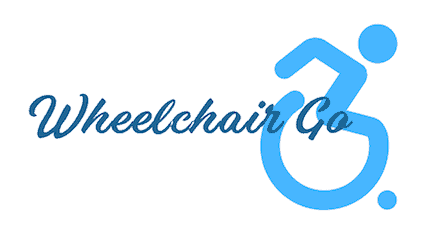Imagine the wind whipping through your hair, the sun warming your face, and the scent of pine needles filling your senses. You’re not simply enjoying a leisurely stroll; you’re conquering rugged trails, exploring hidden valleys, and experiencing the exhilaration of nature’s grandeur. But what if mobility challenges have traditionally held you back from these adventures?
Enter the all-terrain wheelchair. These extraordinary vehicles are designed to transform limitations into liberation, allowing individuals with disabilities to embrace the boundless beauty of the outdoors. Hiking in an all-terrain wheelchair isn’t just about physical access; it’s about reclaiming independence, finding freedom, and connecting with nature on a deeper level.
Selecting the perfect all-terrain wheelchair for your hiking expeditions is crucial. With a myriad of options available, it’s essential to consider factors like terrain, personal abilities, and desired features. By carefully choosing the best all terrain wheelchairs for hiking you can unlock a world of possibilities and embark on unforgettable journeys.
Key Factors to Consider When Choosing an All-Terrain Wheelchair for Hiking
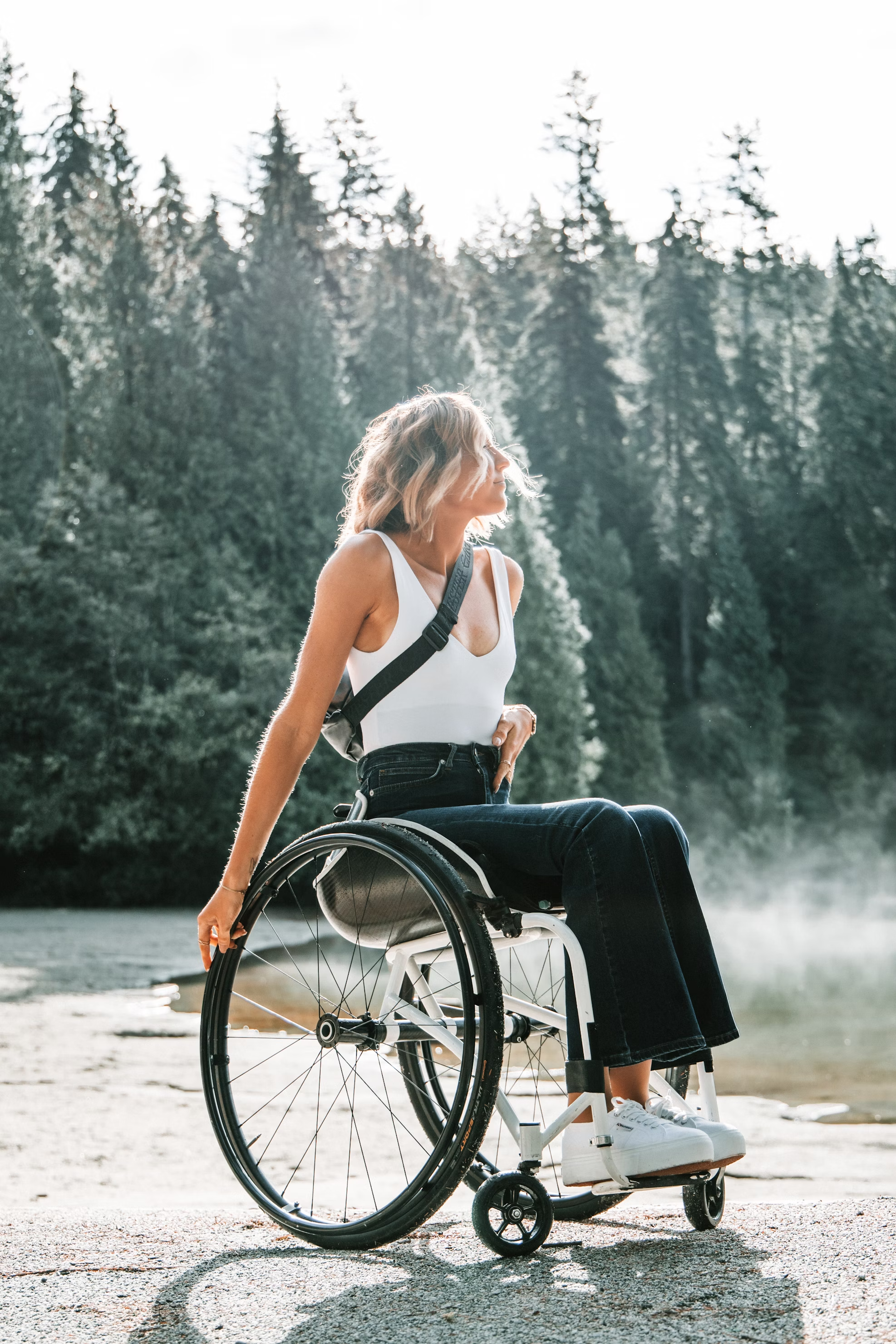
Selecting the best all terrain wheelchair for your hiking adventures requires careful consideration of several crucial factors. Understanding these elements will empower you to make an informed decision that aligns with your specific needs and desired outdoor experiences.
Terrain Type
The nature of the terrain you plan to conquer significantly influences the type of wheelchair required. Rocky trails, for instance, demand exceptional suspension and ground clearance to absorb shock and navigate uneven surfaces. Conversely, sandy beaches necessitate large, wide tires to prevent sinking. When evaluating all-terrain wheelchairs, carefully assess the specific terrain you’ll encounter to ensure the chair is equipped to handle the challenges it presents. Consider factors like incline, decline, obstacles, and surface conditions to make an informed choice.
Understanding your local trails and the types of terrain they offer is essential. Researching trail conditions, including elevation changes, rock formations, and soil composition, will help you determine the necessary features for your wheelchair. Additionally, consider the versatility of the wheelchair if you plan to explore different environments, such as forests, meadows, or coastal areas.
User’s Weight and Physical Abilities
The user’s weight and physical capabilities are paramount when selecting an all-terrain wheelchair. The chair must be able to support the user’s weight comfortably and securely while providing adequate maneuverability. Factors such as upper body strength, hand dexterity, and overall mobility should be considered to ensure the wheelchair is suitable for the user’s abilities.
It’s crucial to consult with healthcare professionals or wheelchair specialists to determine the appropriate weight capacity and features for the individual user. They can assess the user’s specific needs and recommend wheelchairs that offer optimal support and functionality. Additionally, considering the user’s long-term goals and potential changes in physical abilities is essential for selecting a wheelchair that can adapt to evolving needs.
Wheelchair Features
The features of an all-terrain wheelchair play a vital role in determining its performance on various terrains. Suspension systems, ground clearance, traction, and maneuverability are key considerations. A well-designed suspension absorbs shocks and vibrations, enhancing comfort and control. Adequate ground clearance allows the wheelchair to navigate obstacles and uneven surfaces with ease. Effective traction is essential for preventing slippage on different terrains, while maneuverability ensures the user can navigate tight spaces and turns.
Consider additional features such as adjustable seat height, reclining options, and customizable configurations to enhance comfort and functionality. Some wheelchairs offer specialized features like electric power assist or off-road tires for specific terrain challenges. Thoroughly evaluating the available features will help you select a wheelchair that meets your individual requirements and preferences.
Comfort and Adjustability
Spending extended periods in a wheelchair necessitates optimal comfort. Adjustable features such as seat height, back angle, and armrests allow for personalized fit and support. Consider factors like cushioning, ventilation, and seat width to ensure long-term comfort during your hiking adventures.
A comfortable wheelchair enhances the overall hiking experience and reduces the risk of discomfort or fatigue. Adjustable features enable users to find their ideal seating position, promoting relaxation and enjoyment. Additionally, consider the wheelchair’s ability to accommodate different clothing layers for varying weather conditions.
Maintenance and Durability
All-terrain wheelchairs are subjected to rigorous conditions, making durability and ease of maintenance essential factors. High-quality materials and construction ensure the wheelchair can withstand the challenges of outdoor environments. Consider factors such as rust resistance, corrosion protection, and the availability of replacement parts.
Regular maintenance is crucial for preserving the wheelchair’s performance and longevity. Assess the complexity of maintenance tasks and the availability of repair services in your area. A wheelchair that requires minimal upkeep and is readily repairable will provide peace of mind during your adventures.
10 of the Best All Terrain Wheelchairs for Hiking
Choosing the right all-terrain wheelchair can be a daunting task. With a plethora of options available, it’s essential to consider your specific needs and preferences. To assist in your decision-making process, we’ve compiled a list of ten top-rated all-terrain wheelchairs, divided into motorized and manual categories. Each wheelchair is accompanied by a detailed description, pricing information, and a breakdown of its pros and cons.
Motorized All-Terrain Wheelchairs
Magic Mobility Frontier V6
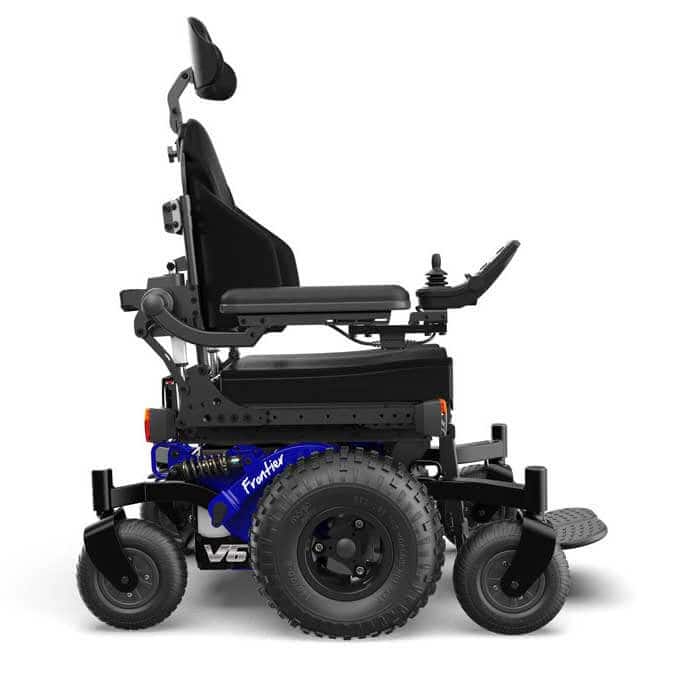
The Magic Mobility Frontier V6 is a powerhouse in the world of all-terrain wheelchairs. Designed for maximum performance and comfort, this wheelchair boasts a robust frame, advanced suspension system, and powerful electric motors. Its large, off-road tires effortlessly conquer challenging terrain, while adjustable seating and armrests ensure a personalized fit.
- Pricing: Starting at $25,000
- Pros: Exceptional performance on rough terrain, comfortable ride, long-range battery, customizable options
- Cons: High price point, heavy weight
Magic Mobility Extreme X8
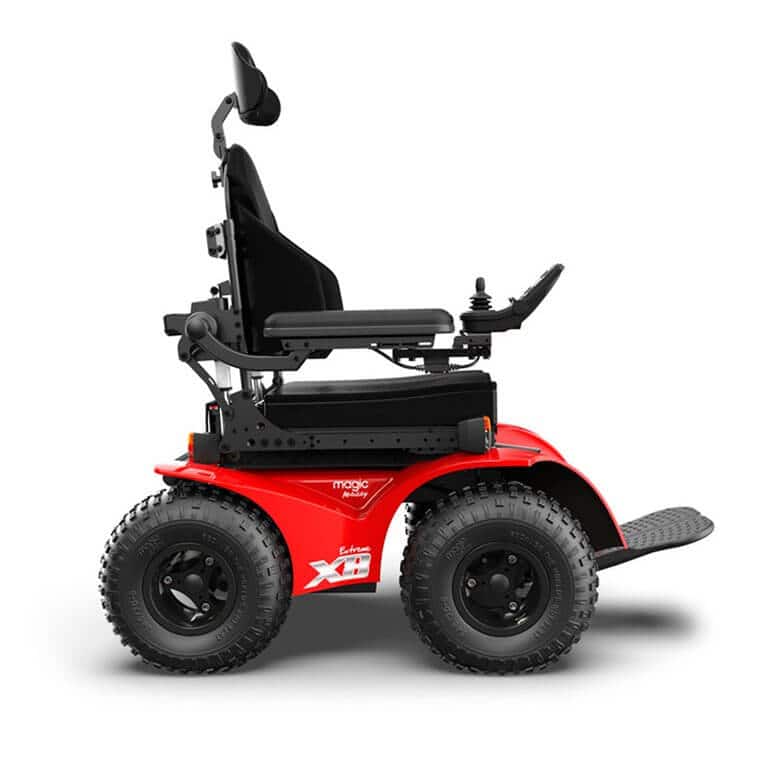
For those seeking the ultimate off-road adventure, the Magic Mobility Extreme X8 is the ideal choice. Equipped with four-wheel drive and independent suspension, this wheelchair can tackle even the most demanding trails. Its high ground clearance and customizable features make it a versatile option for users with varying needs.
- Pricing: Starting at $28,000
- Pros: Unparalleled off-road capability, versatile, durable construction
- Cons: Very high price, complex operation
Jazzy 1450 Power Wheelchair
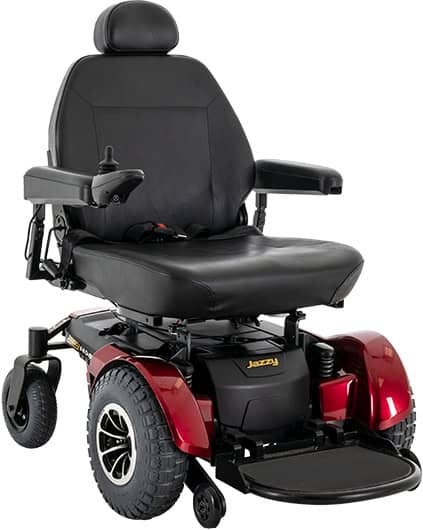
Offering a balance of affordability and performance, the Jazzy 1450 Power Wheelchair is a popular choice for many. Its mid-wheel drive configuration provides good ground clearance, while comfortable seating and various customization options enhance user comfort.
- Pricing: Starting at $12,000
- Pros: Affordable, reliable, suitable for moderate terrain, comfortable seating
- Cons: Limited off-road capabilities compared to specialized models
Action TrackChair ST
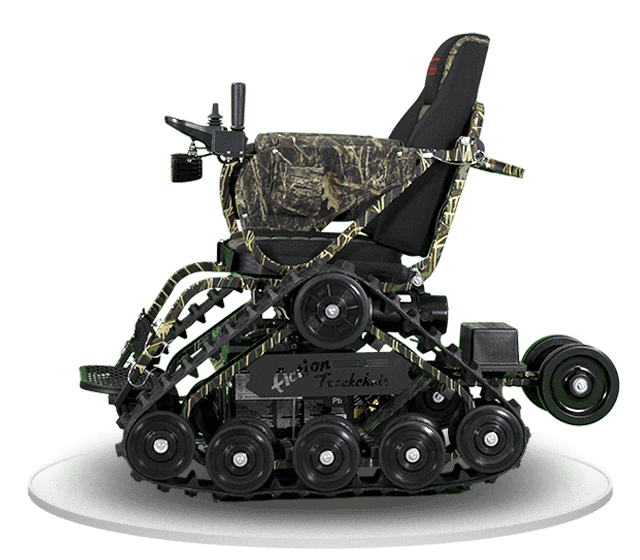
The Action Track Chair stands out with its unique track drive system, providing exceptional traction on soft surfaces like sand or mud. Its high ground clearance and adjustable suspension make it capable of handling rough terrain.
- Pricing: Starting at $15,000
- Pros: Excellent traction on soft surfaces, stable and secure, versatile
- Cons: Can be challenging to maneuver on hard surfaces
Quickie Q700 M
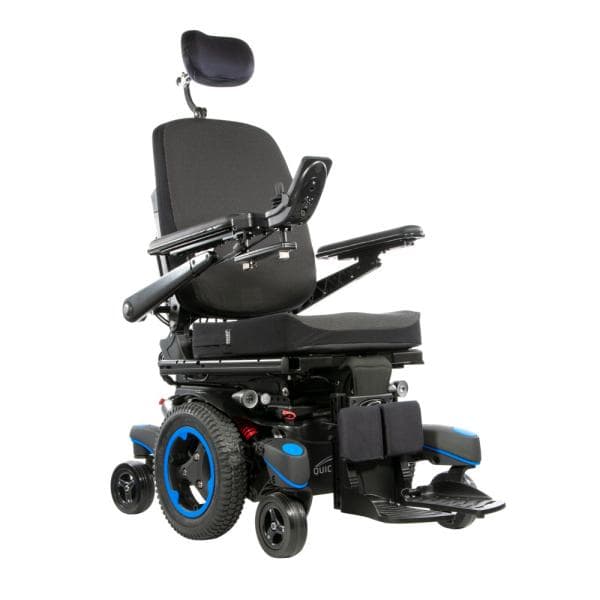
For users seeking a lightweight and maneuverable option, the Quickie Q700 is worth considering. Its compact design makes it easy to transport, while its good ground clearance allows it to handle various terrains.
- Pricing: Starting at $18,000
- Pros: Lightweight, compact design, easy to transport, good ground clearance, comfortable seating
- Cons: Limited power compared to larger models
Manual All-Terrain Wheelchairs
Manual all-terrain wheelchairs offer a more budget-friendly option for those seeking outdoor adventures. While they require physical exertion, they provide a sense of freedom and independence.
GRIT Freedom Chair Spartan
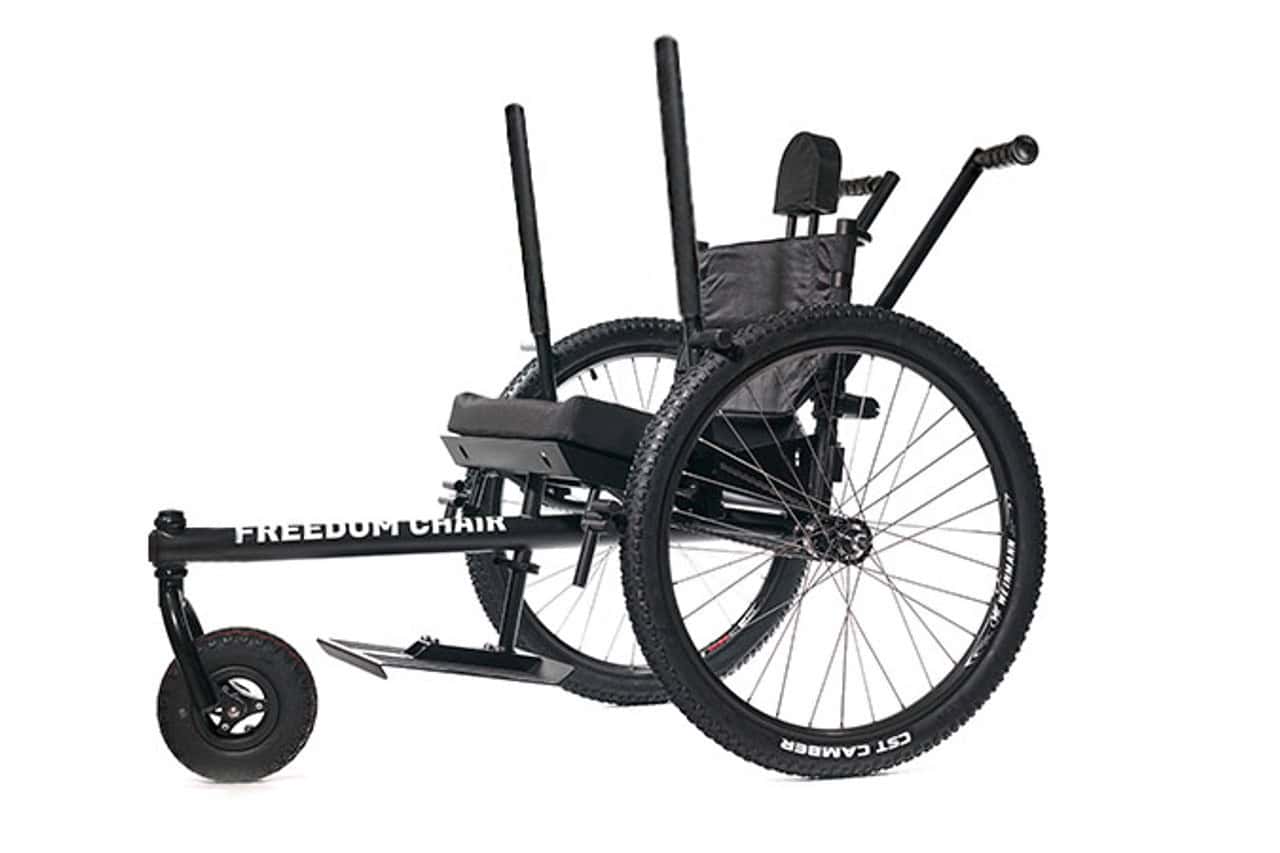
The GRIT Freedom Chair is a popular choice for its lightweight design and versatility. Constructed with a durable aluminum frame, it’s easy to maneuver and transport. Large off-road tires provide excellent traction, while adjustable seating options ensure comfort.
- Pricing: Starting at $4,000
- Pros: Affordable, lightweight, versatile, easy to transport, suitable for various activities
- Cons: Requires physical exertion, may be challenging on steep inclines
Top End Crossfire All-Terrain Wheelchair
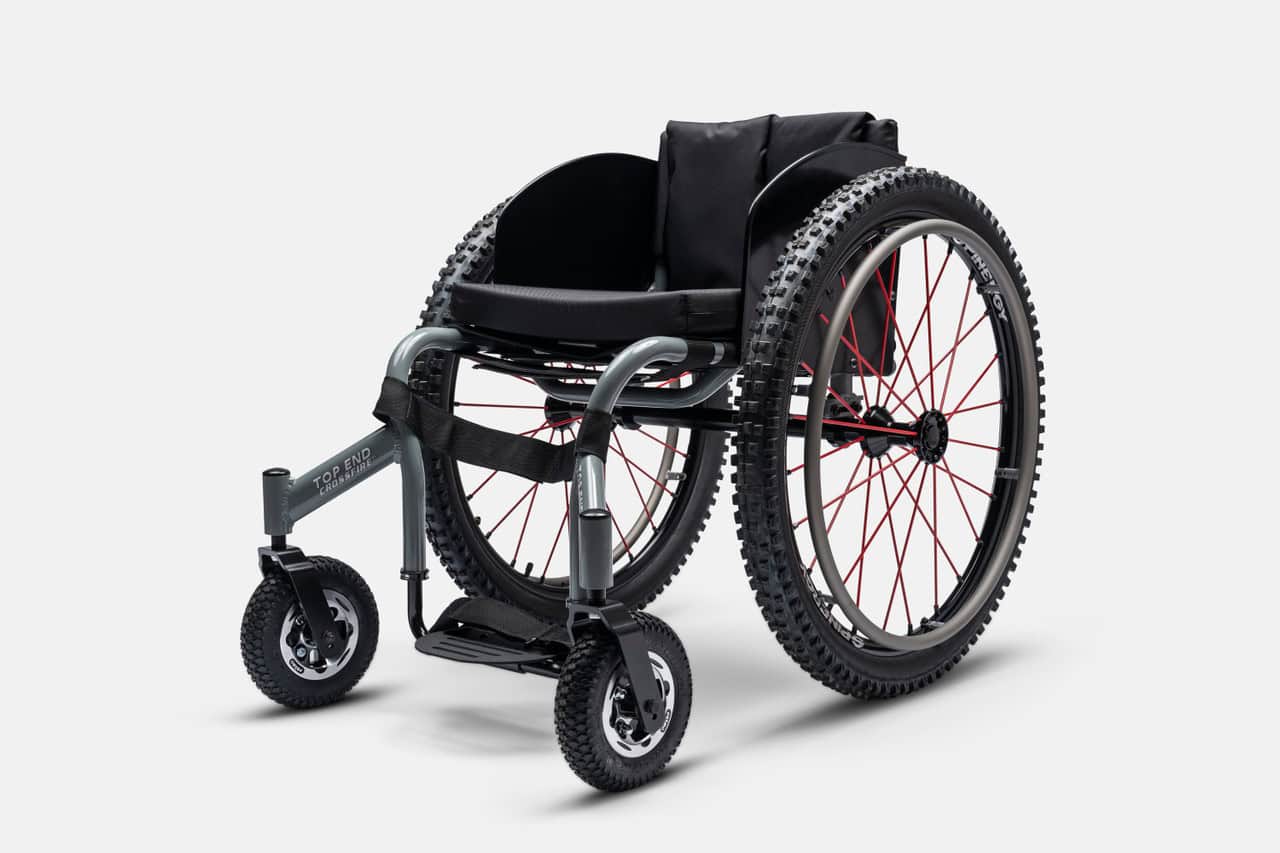
Built for durability, the Top End Crossfire is equipped with a sturdy steel frame and high ground clearance. Its adjustable suspension system provides a comfortable ride, even on rough terrain.
- Pricing: Starting at $3,000
- Pros: Durable, stable, suitable for rough terrain, customizable
- Cons: Heavy weight, difficult to transport
Hippocampe All-Terrain / Ski / Beach Wheelchair
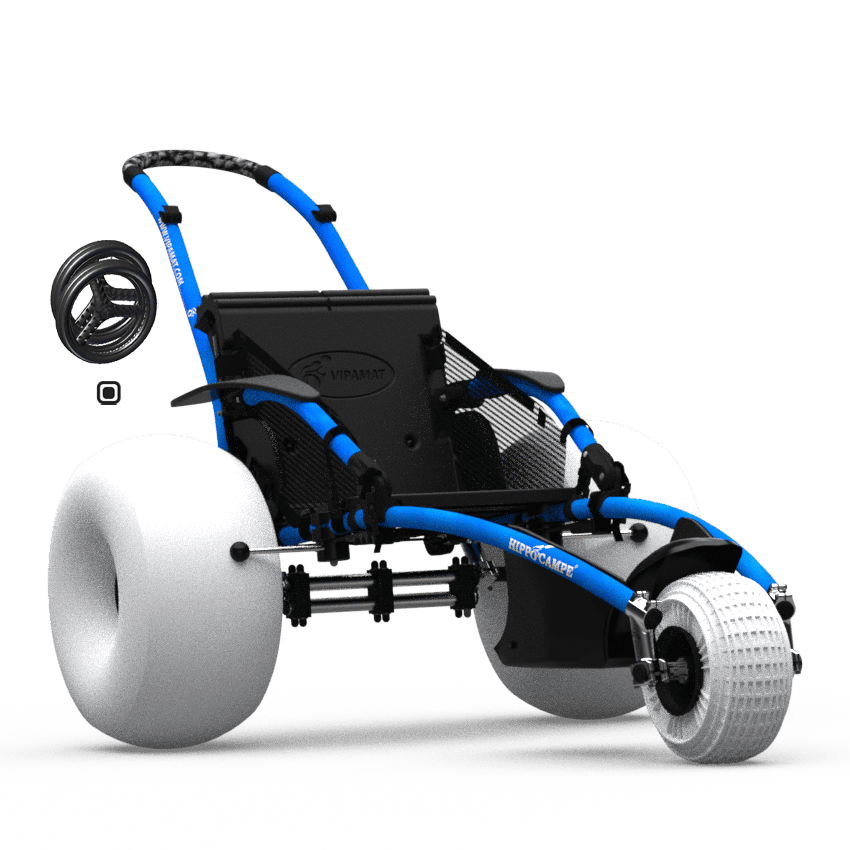
As its name suggests, the Hippocampe is a versatile wheelchair designed for various terrains. Its large, inflatable tires provide excellent traction on sand, snow, and uneven ground. The chairs inflatable tires can also be switched out for solid tires when terrain necessitates such a switch. The chair’s unique design offers a comfortable and secure seating position.
- Pricing: Starting at $2,500
- Pros: Versatile, suitable for multiple terrains, comfortable seating
- Cons: May be less stable on hard surfaces unless , requires proper inflation
Extreme Motus Emma X3
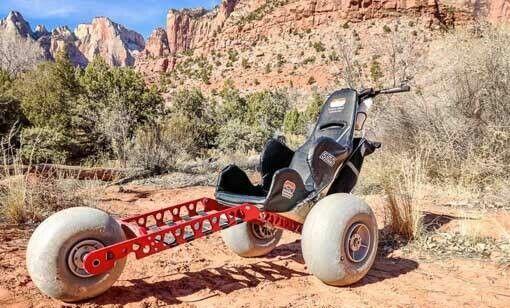
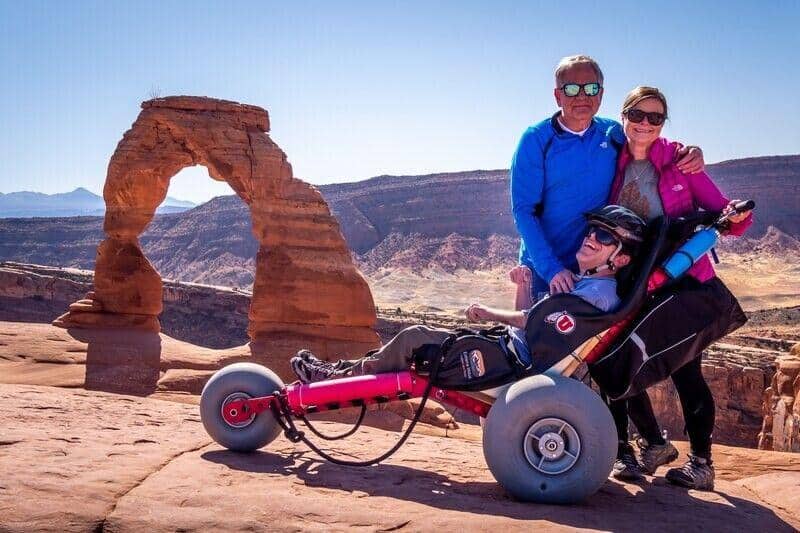
The Extreme Motus Emma X3 is a high-performance manual wheelchair designed for outdoor enthusiasts. Its lightweight yet sturdy frame, coupled with large, off-road tires, makes it suitable for challenging terrain.
- Pricing: Starting at $3,500
- Pros: High performance, lightweight, durable, comfortable seating
- Cons: Higher price point compared to other manual options
Mountain Trike All-Terrain Wheelchair
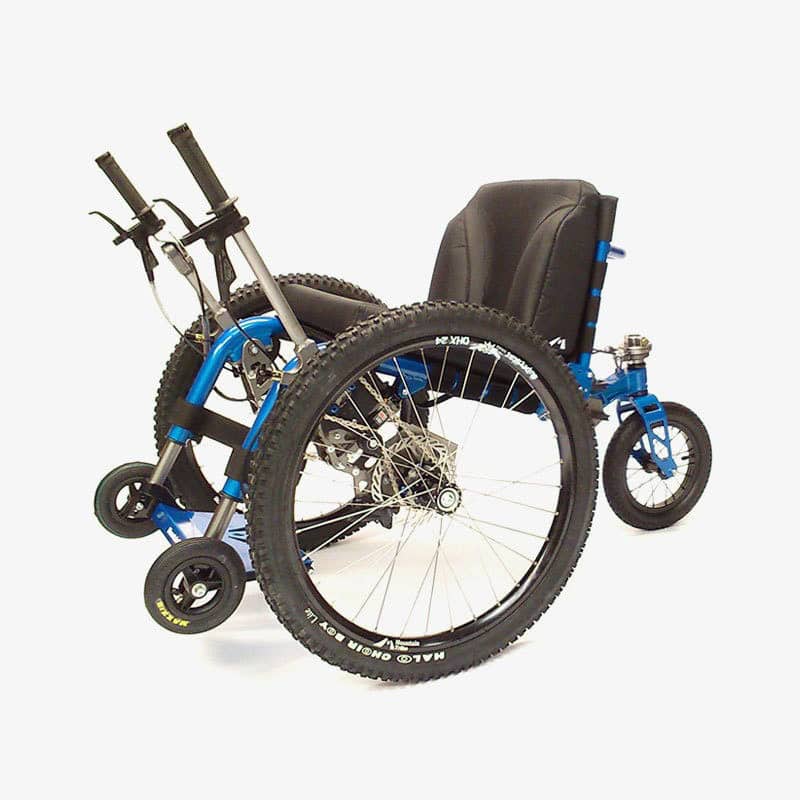
The Mountain Trike is a robust, three-wheeled wheelchair designed for outdoor adventures, featuring large, off-road tires and a sturdy frame.
- Pricing: Starting at $4,500
- Pros: Versatile terrain, comfortable seating, customizable options.
- Cons: Weight, manual propulsion, limited speed.
Note: To provide the most accurate and up-to-date information, including pricing and specific features, it’s essential to research the latest models and consult with wheelchair specialists.
Tips for Hiking in an All-Terrain Wheelchair
Embarking on a hiking adventure in an all-terrain wheelchair requires careful planning and preparation. By following these essential tips, you can enhance your experience and ensure a safe and enjoyable journey.
Safety Tips
Safety should be a top priority when hiking in an all-terrain wheelchair. Always inform someone of your hiking plans, including your intended route and estimated return time. Consider carrying a communication device, such as a satellite phone or GPS tracker, in case of emergencies. Inspect your wheelchair before each trip, checking for tire pressure, brake function, and overall condition. Wear appropriate safety gear, including a helmet, protective clothing, and sturdy footwear.
Understanding the potential risks associated with outdoor activities is crucial. Be aware of weather conditions and terrain challenges. Avoid hiking alone and consider bringing a hiking companion who can assist if needed. Practice defensive driving techniques while operating a motorized wheelchair, and be cautious when navigating uneven or slippery surfaces.
Planning Your Hike
Proper planning is essential for a successful hiking adventure. Research your chosen trail beforehand, considering its difficulty level, terrain, and accessibility features. Check for trail closures or restrictions and obtain necessary permits if required. Pack essential supplies, including water, snacks, first aid kit, and any necessary medications.
Consider the length of your hike and plan accordingly. Bring extra batteries for motorized wheelchairs and spare parts for any equipment. If camping overnight, ensure you have appropriate camping gear and a suitable campsite. Remember to respect wildlife and leave no trace.
Essential Accessories
The right accessories can significantly enhance your hiking experience in an all-terrain wheelchair. Let’s explore some essential items to consider.
A. Storage and Protection
- Wheelchair Bag: A sturdy, waterproof wheelchair bag is indispensable for carrying your essentials. Choose a bag with ample space for clothing, snacks, water, and first aid supplies. Look for features like multiple compartments, adjustable straps, and reflective elements for visibility.
- Waterproof Cover: Protect your wheelchair and belongings from rain, snow, and dust with a high-quality waterproof cover. A good cover should fit snugly, offering complete protection without hindering maneuverability.
- Dry Bags: These are excellent for keeping valuables, electronics, and clothing dry in unpredictable weather conditions.
B. Comfort and Support
- Wheelchair Cushion: A well-chosen wheelchair cushion can make a world of difference in comfort, especially during long hikes. Consider options like gel, memory foam, or air-filled cushions for optimal pressure relief and support.
- Backrest Support: Additional lumbar support can help prevent fatigue and discomfort. Look for adjustable backrest options to find the perfect fit.
C. Power and Utility
- Spare Batteries and Charger: For motorized wheelchairs, carrying spare batteries is crucial. A portable charger is essential for recharging on the go.
- Wheelchair Ramp: A lightweight, portable wheelchair ramp can be invaluable for overcoming obstacles like steps or uneven terrain.
- Sunshade or Umbrella: Protect yourself from the sun’s rays with a wheelchair-mounted sunshade or a portable umbrella.
- Cup Holder: Stay hydrated with a convenient cup holder attached to your wheelchair.
- Mirror: A small mirror can be helpful for monitoring traffic and observing your surroundings.
D. Communication and Safety
- Communication Device: A satellite phone or GPS device can be a lifesaver in remote areas.
- First Aid Kit: A well-stocked first aid kit is essential for treating minor injuries.
- Repair Kit: A basic repair kit with tools like tire levers, a pump, and spare parts can be useful for addressing minor wheelchair issues.
By carefully selecting and packing the right accessories, you can enhance your comfort, safety, and overall enjoyment of your hiking adventures.
Overcoming Challenges
Hiking in an all-terrain wheelchair may present unique challenges. Soft ground conditions can be difficult to navigate, so consider using traction aids or wider tires. Steep inclines and declines require extra caution and may necessitate assistance from a hiking companion. Rocky terrain can be challenging, so choose trails with smoother surfaces whenever possible.
Be prepared for unexpected obstacles, such as fallen trees or muddy sections. Consider carrying tools to address minor repairs or clear small obstructions. Maintain a positive attitude and focus on the beauty of the outdoors.
By following these tips and with careful planning, you can overcome challenges and enjoy unforgettable hiking adventures in your all-terrain wheelchair.
Accessibility and Inclusivity in Hiking
Making the outdoors accessible to everyone is crucial. All-terrain wheelchairs are a significant step forward, but creating a truly inclusive hiking experience requires a broader approach.
Importance of Accessible Trails
Accessible trails are essential for individuals with disabilities to enjoy the benefits of nature. These trails should be designed to accommodate various mobility levels, with features like gentle slopes, wide paths, and stable surfaces. Providing accessible parking, restrooms, and picnic areas further enhances the overall experience.
By investing in accessible trail development, we can create opportunities for individuals with disabilities to connect with nature, improve their physical and mental well-being, and foster a sense of community.
Advocacy for Accessible Outdoor Recreation
Advocacy plays a vital role in promoting accessible outdoor recreation. Individuals with disabilities, their families, and disability organizations can work together to raise awareness about the importance of accessible trails and facilities. Collaborating with government agencies, park authorities, and outdoor recreation businesses can help drive positive change.
Advocacy efforts can focus on policy development, funding allocation, and public education. By sharing personal stories and highlighting the benefits of accessible outdoor recreation, we can inspire others to support this cause.
Resources for Finding Accessible Hiking Trails
Numerous resources are available to help individuals with disabilities find accessible hiking trails. Online databases, mobile apps, and guidebooks provide information on trail conditions, accessibility features, and contact details. Organizations dedicated to outdoor recreation and disability rights often maintain comprehensive lists of accessible trails.
It’s essential to verify trail conditions before heading out, as accessibility can change over time. Consulting with local hiking groups or disability organizations can provide valuable insights and recommendations.
By utilizing these resources and advocating for accessible outdoor recreation, we can ensure that everyone has the opportunity to experience the beauty and wonder of nature.
Conclusion
Hiking in an all-terrain wheelchair offers an unparalleled opportunity to experience the beauty and serenity of the outdoors. By carefully considering factors such as terrain, personal abilities, and wheelchair features, you can select the perfect model to suit your needs. Whether you opt for the power and comfort of a motorized wheelchair or the independence of a manual model, the freedom to explore nature’s wonders in one of the best all terrain wheelchairs for hiking is within reach.
Remember to prioritize safety by planning your hikes, packing essential gear, and understanding the challenges of outdoor terrain. By advocating for accessible trails and supporting inclusive outdoor recreation, we can create a world where everyone has the opportunity to enjoy the benefits of nature.
So, what are you waiting for? Embrace the adventure and discover the joy of hiking in an all-terrain wheelchair. Start by researching available models, consulting with wheelchair specialists, and exploring accessible trails in your area. With careful planning and preparation, you can embark on unforgettable journeys that connect you with the natural world.
Remember, every trail is a new adventure waiting to be explored.
Disclaimer: This article is intended for informational purposes only and does not constitute medical advice. It is essential to consult with healthcare professionals and wheelchair specialists to determine the best options for individual needs. In addition, information on the best all terrain wheelchairs for hiking for the reviews in this article were compiled from multiple online sources.
